The MIT Future Heritage Lab, in collaboration with displaced Syrian refugees, humanitarian workers, and host communities in Jordan, presents Displaced Empire at the Co-habitats section of the 17th International Architecture Exhibition – La Biennale di Venezia curated by Hashim Sarkis. Displaced Empire is a 1:1 scale textile installation, featuring a tent prototype made out of humanitarian textiles and discarded clothes, that brings forth design as a means for creating a life worth living, a vehicle for knowledge exchange across borders, and a visual critique of humanitarian architecture.
-text by the authors
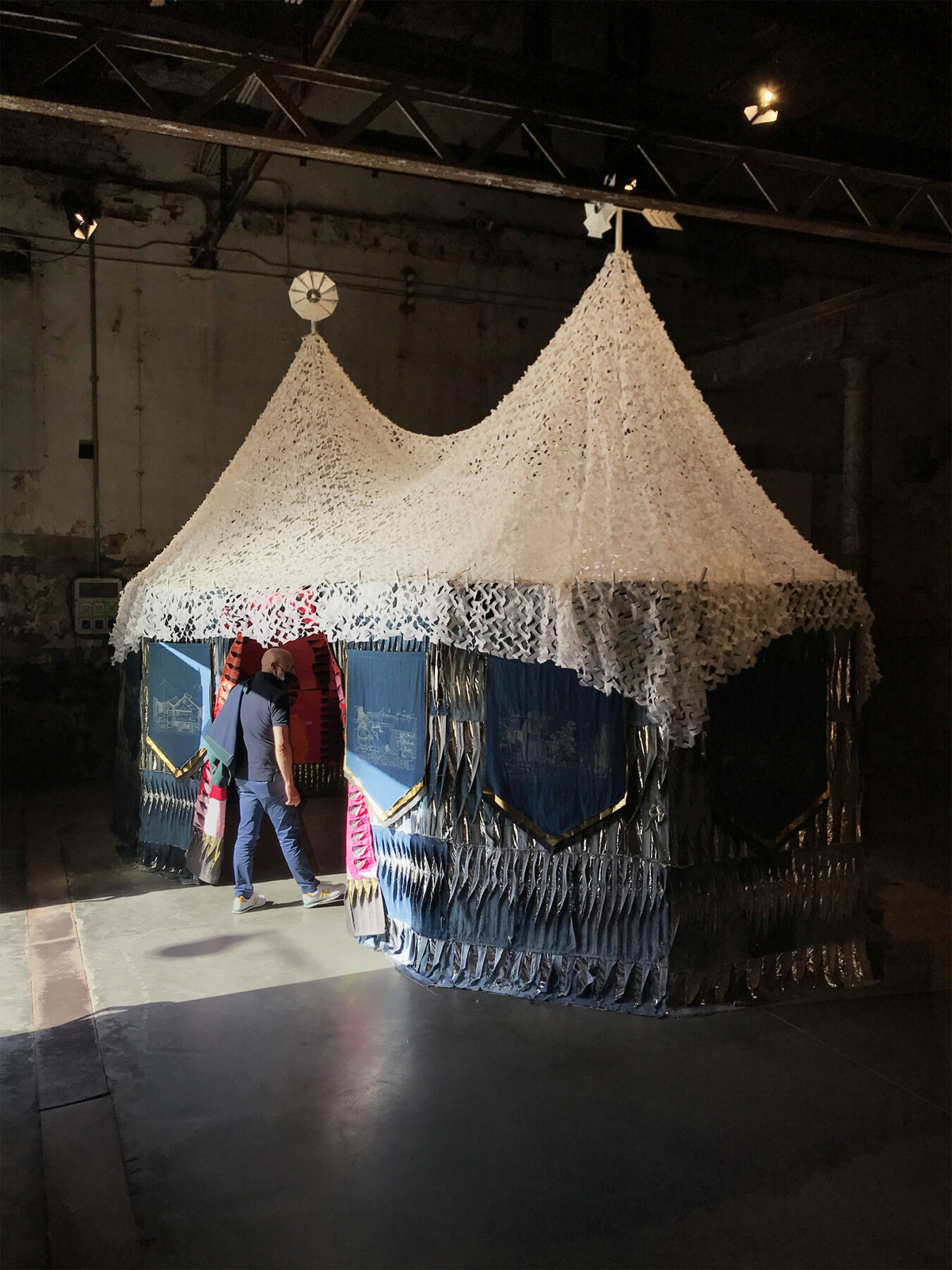
Focused on the Azraq Refugee Camp in Jordan, one of the region’s largest camps sheltering more than 35,000 displaced Syrians, the large-scale installation speculates a near-future world in which the majority of people have been forcibly displaced. In this scenario, the Azraq Camp has become the capital of the global Displaced Empire. The 1:1 scale textile tent, the T-Serai, is the Empire’s HQ–it is a portable palace to reflect on the surplus and scarcity in the architecture of displacement.
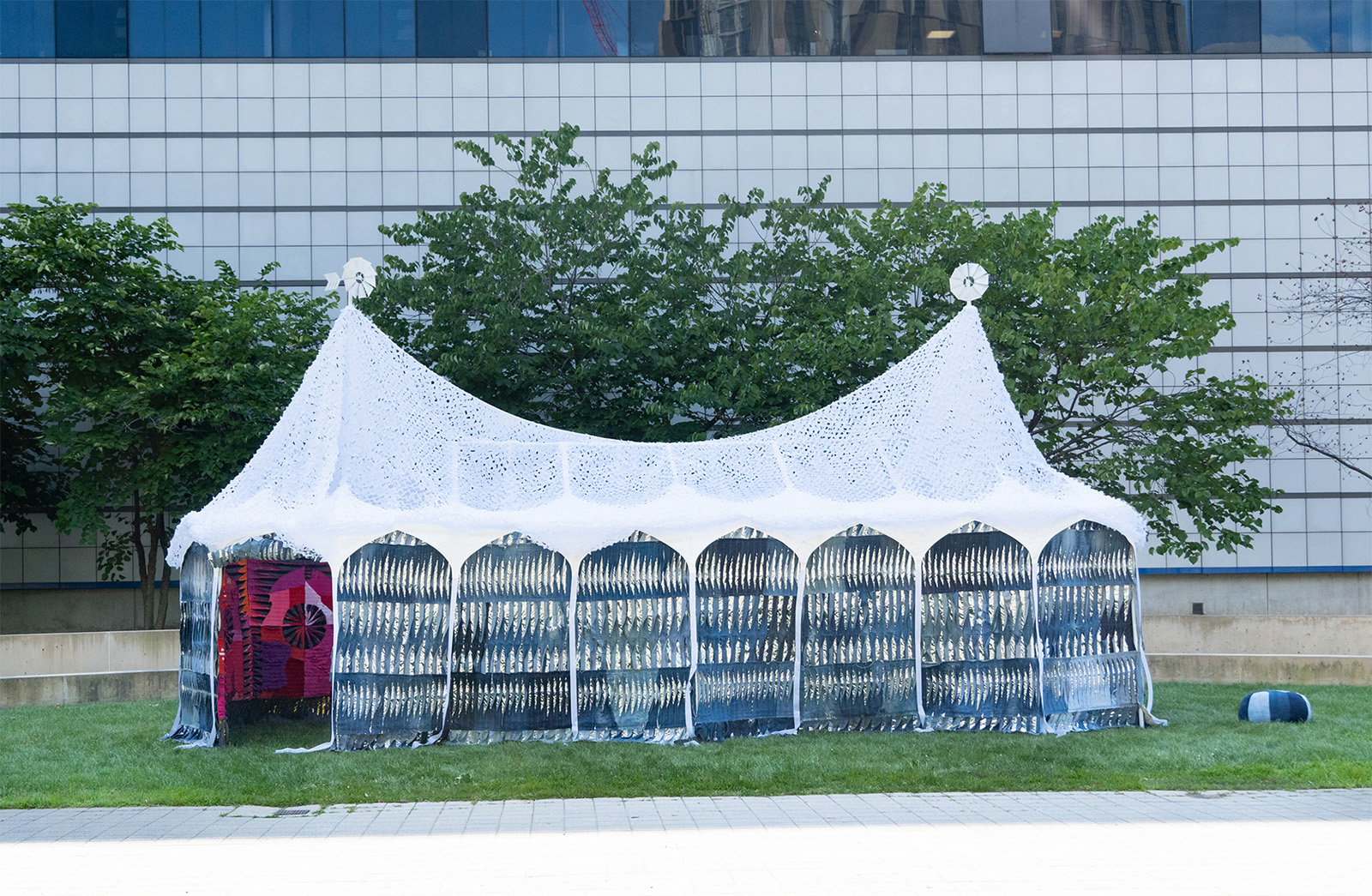
The T-Serai introduces a culturally sensitive, socially inclusive, and environmentally conscious framework to humanitarian design.
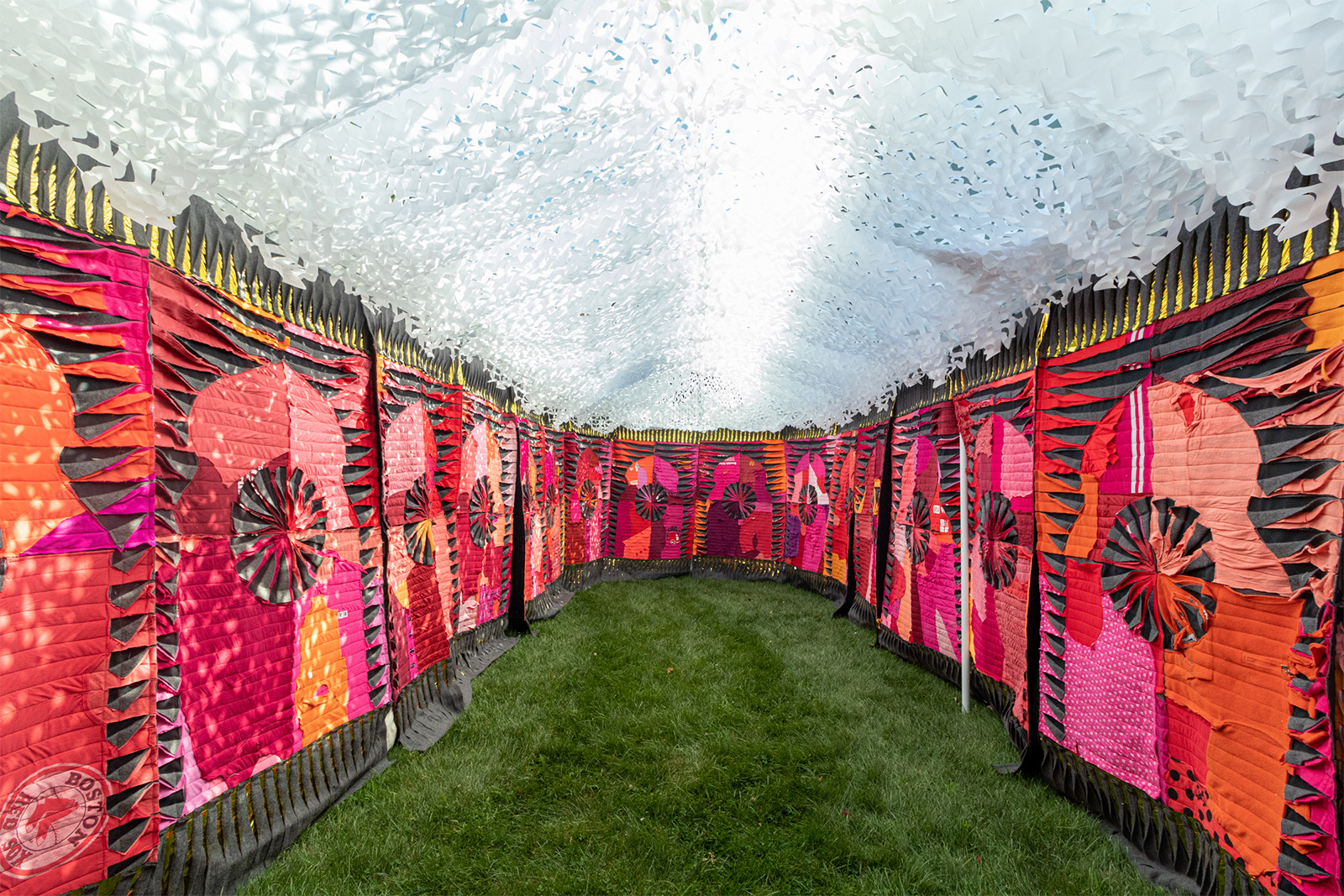
The modular textile system references the mobile architecture tradition of the MENA region. The design is a hybrid of the portable Ottoman palace and the contemporary standardized humanitarian shelter of the Azraq Refugee Camp, the T-Shelter. The installation outlines a cultural approach to humanitarian intervention, bringing forth issues of lacking cultural infrastructures in refugee camps.
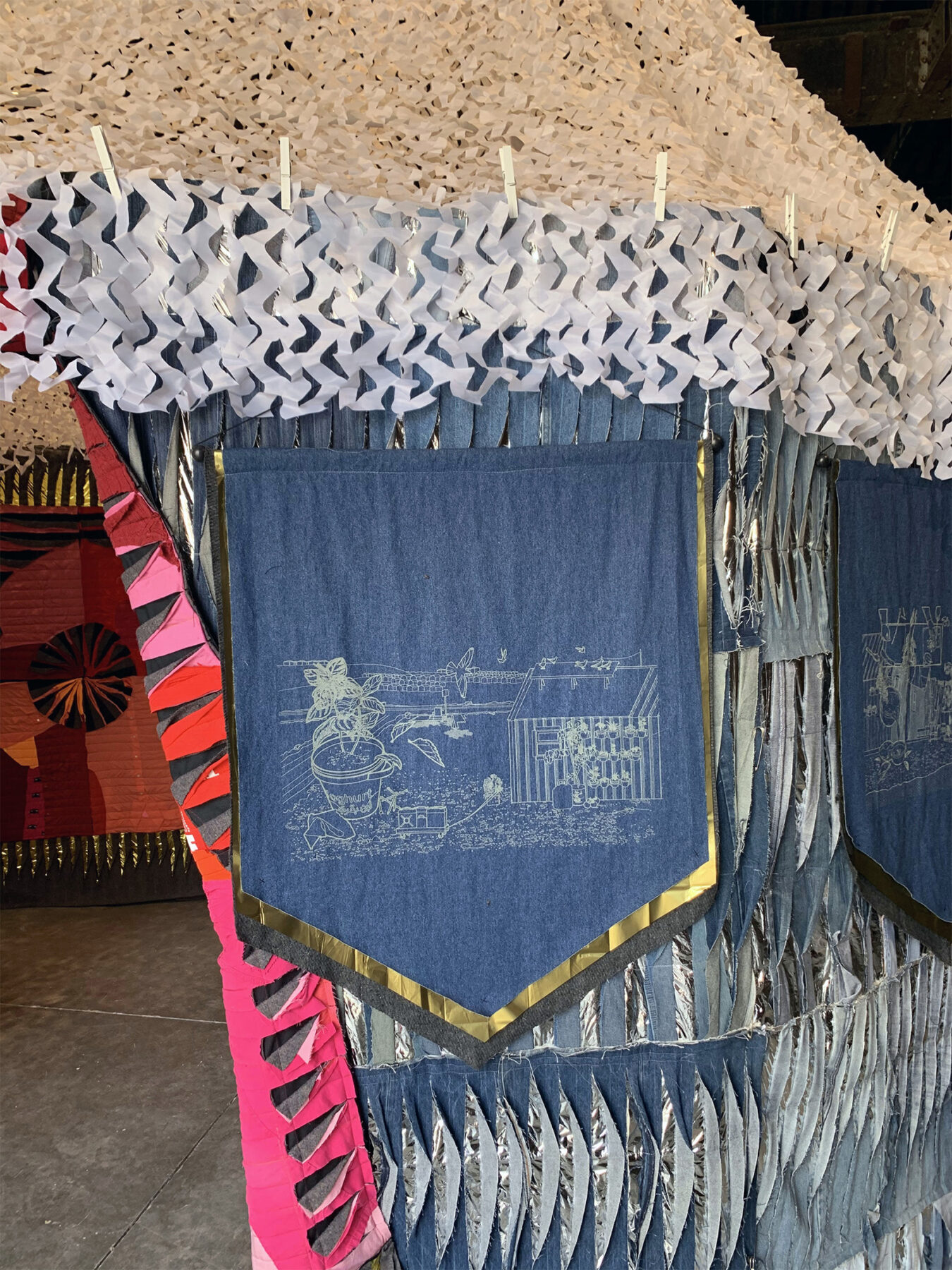
The design process speculates a framework for distributed production and textile storytelling to personalize humanitarian spaces.
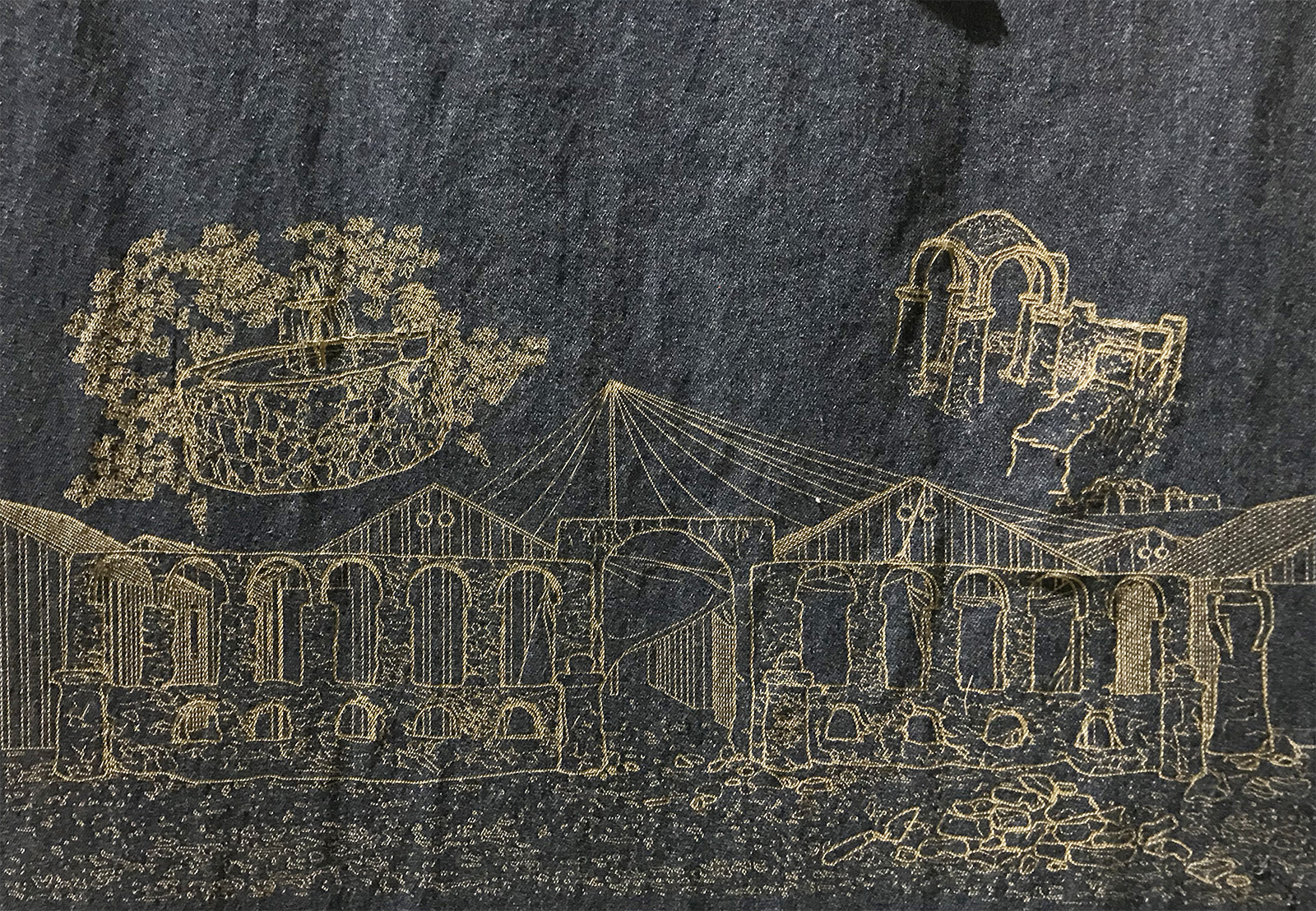
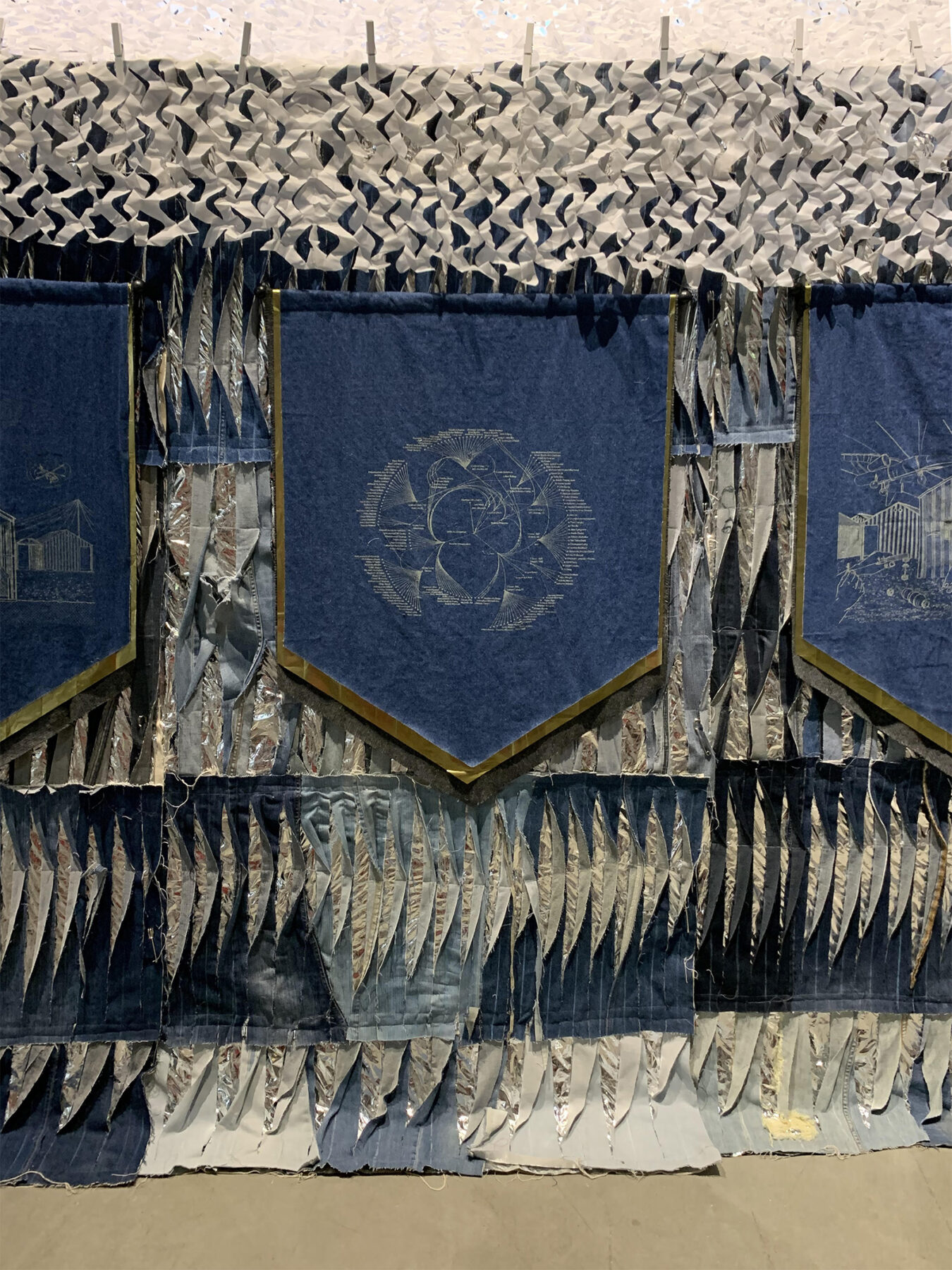
People from 12 countries participated in Future Heritage Lab’s educational workshops in Sharjah, Boston, and Zaatari, Jordan. The multi-directional knowledge exchange between participants of different generations and backgrounds offers a possibility for creative expression, self-determination, and the advancement of pluralism.
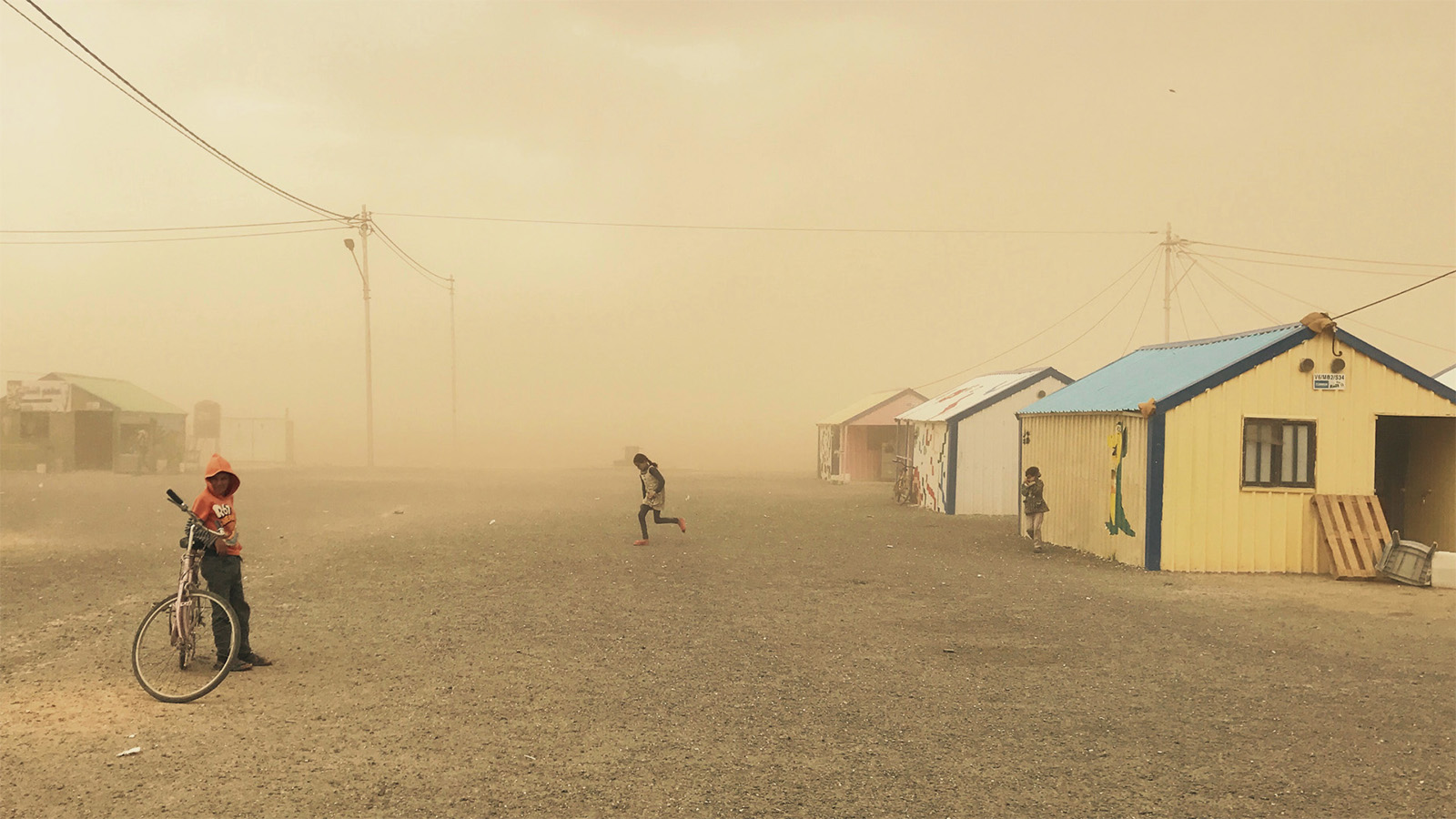
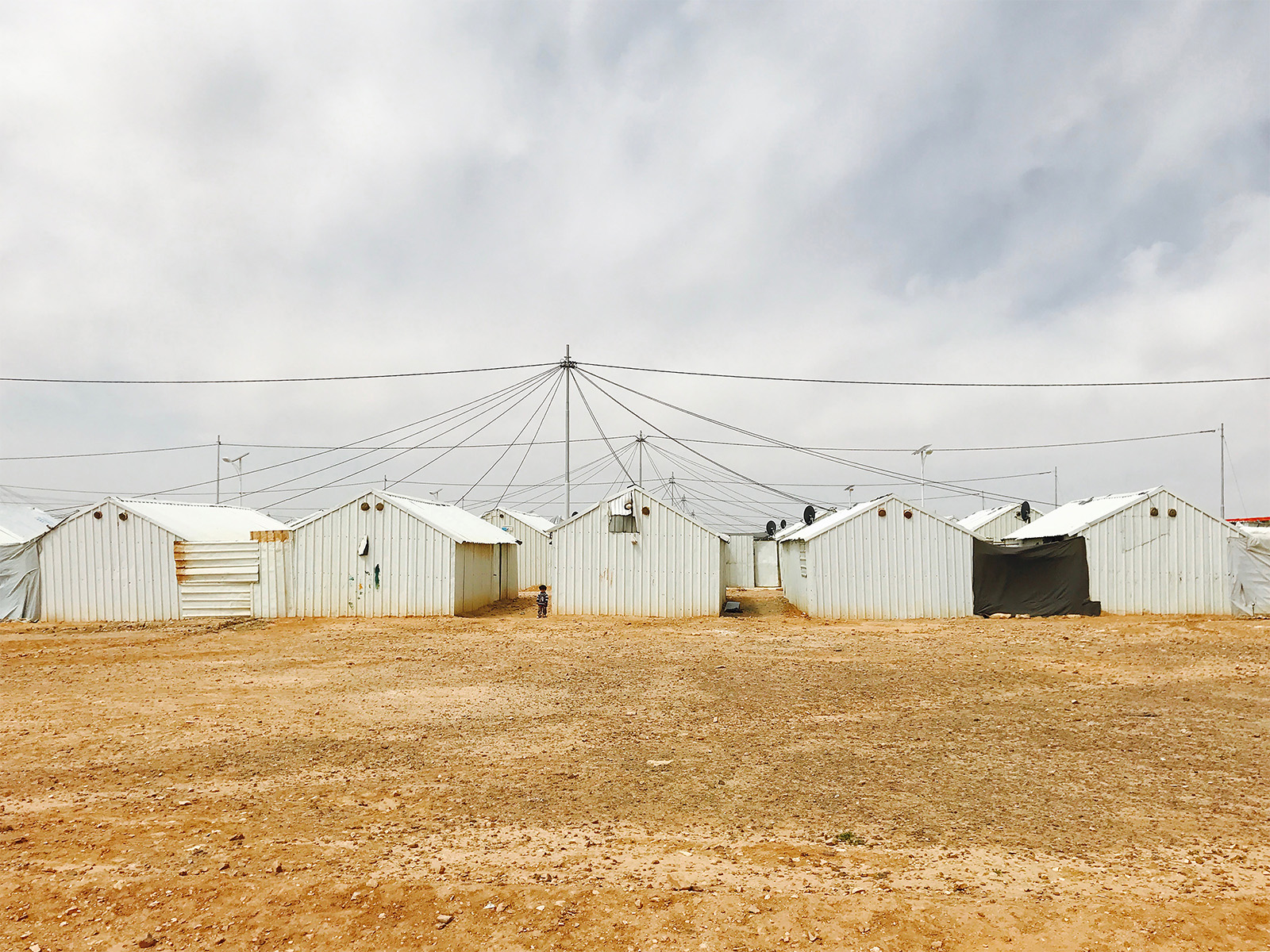
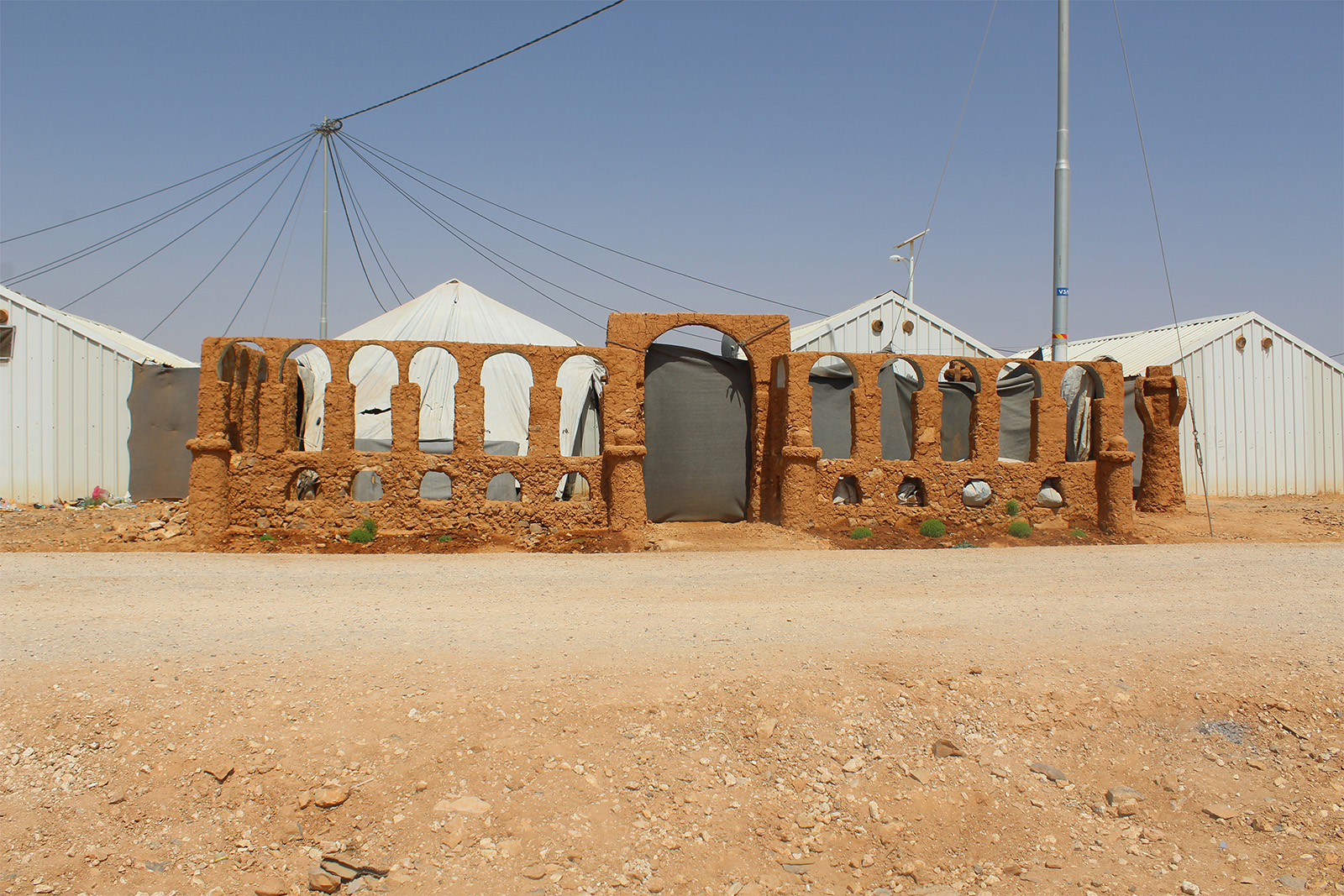
The tent’s materiality explores different aspects of textile architectures, from their iconographic and ornamental expressions to physical insulation properties and their social, economic, and environmental footprint. Each tent panel is made from upcycled discarded clothes and humanitarian textiles.
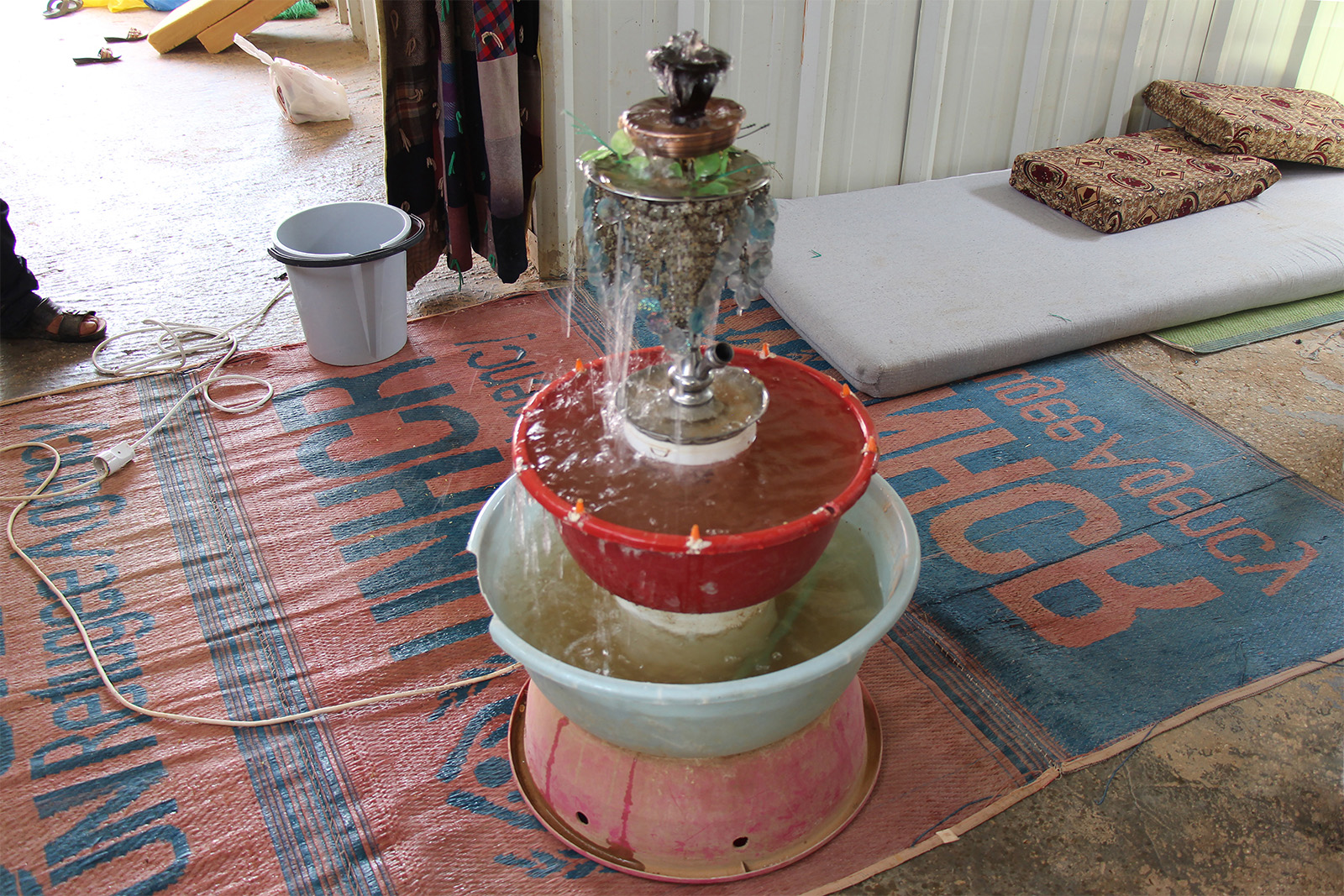
The design probes how the overproduction of the global textile industry could provide a resource to support the social revitalization of communities affected by war.
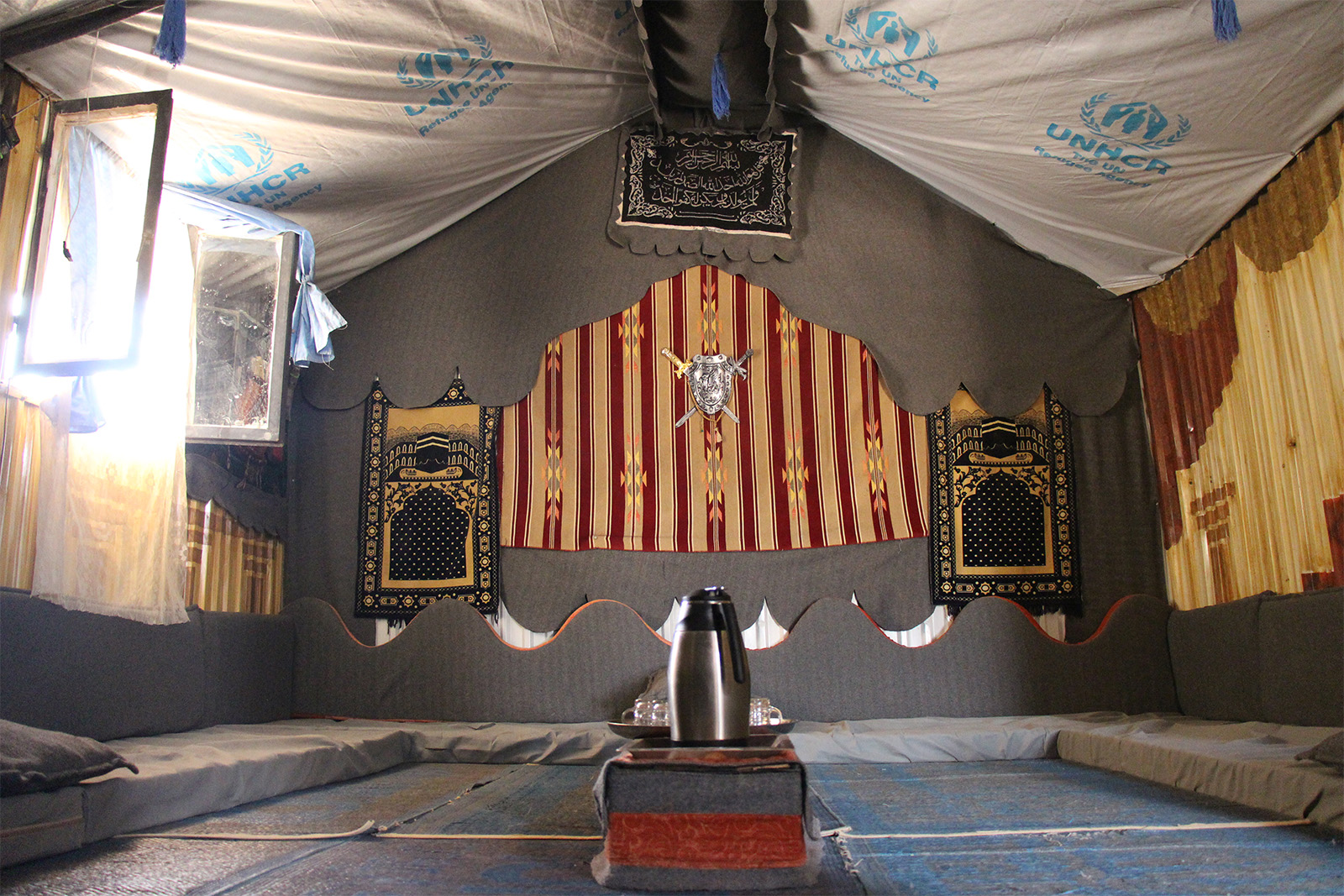
Displaced Empire builds on and learns from the creative work of displaced Syrians at the Azraq Refugee Camp. Laser-burned Imperial Banners on the tent’s exterior depict everyday life at the camp through the residents’ creative production. The refugee-design lens enables an accessible, bottom-up, and participatory discussion of camp politics today. The ingenuity and resourcefulness of these refugee inventions reveal the discrepancy between available aid infrastructure and the real needs of displaced people within a context of scarcity, trauma, confinement, and struggle for a future.
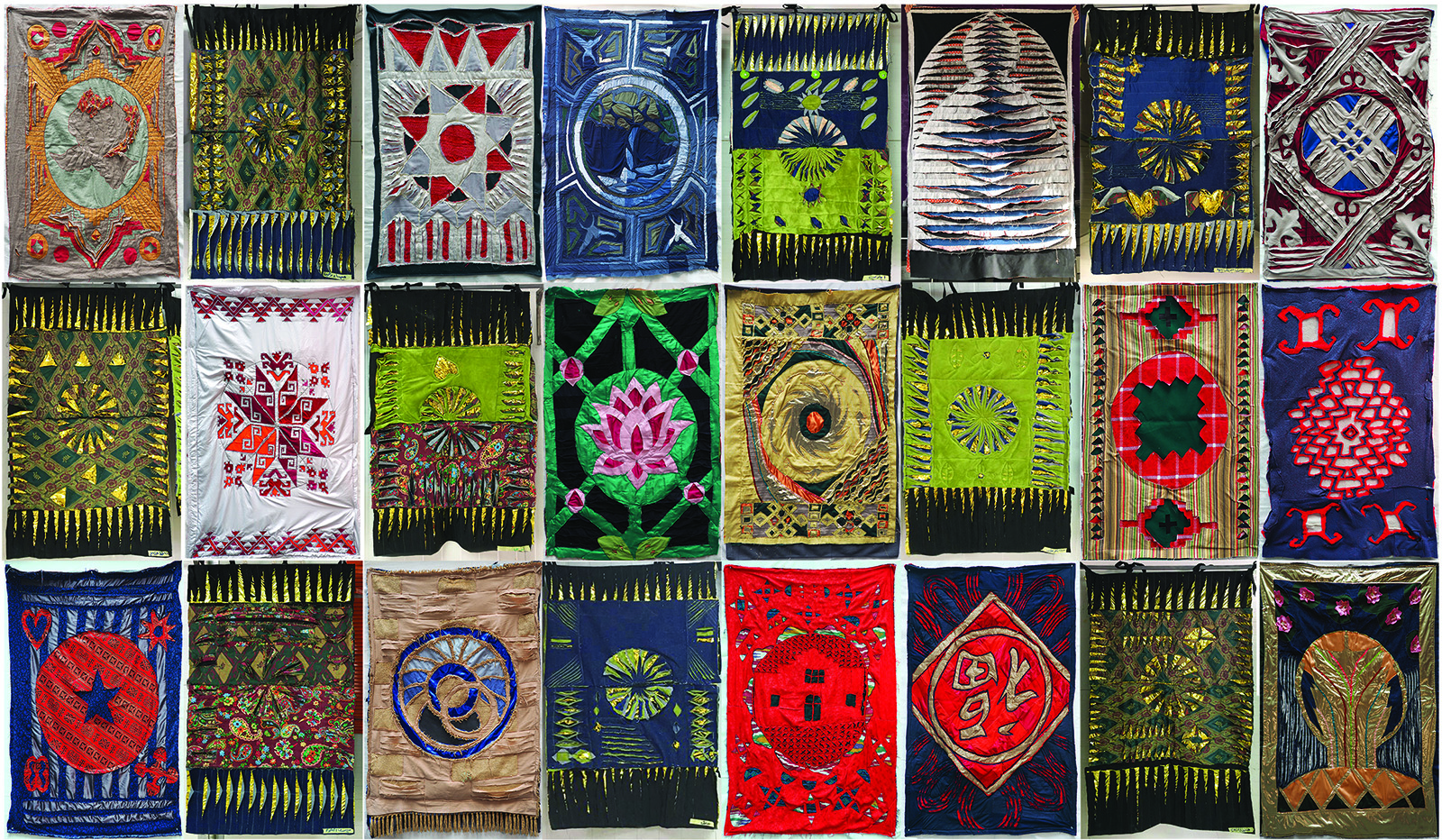
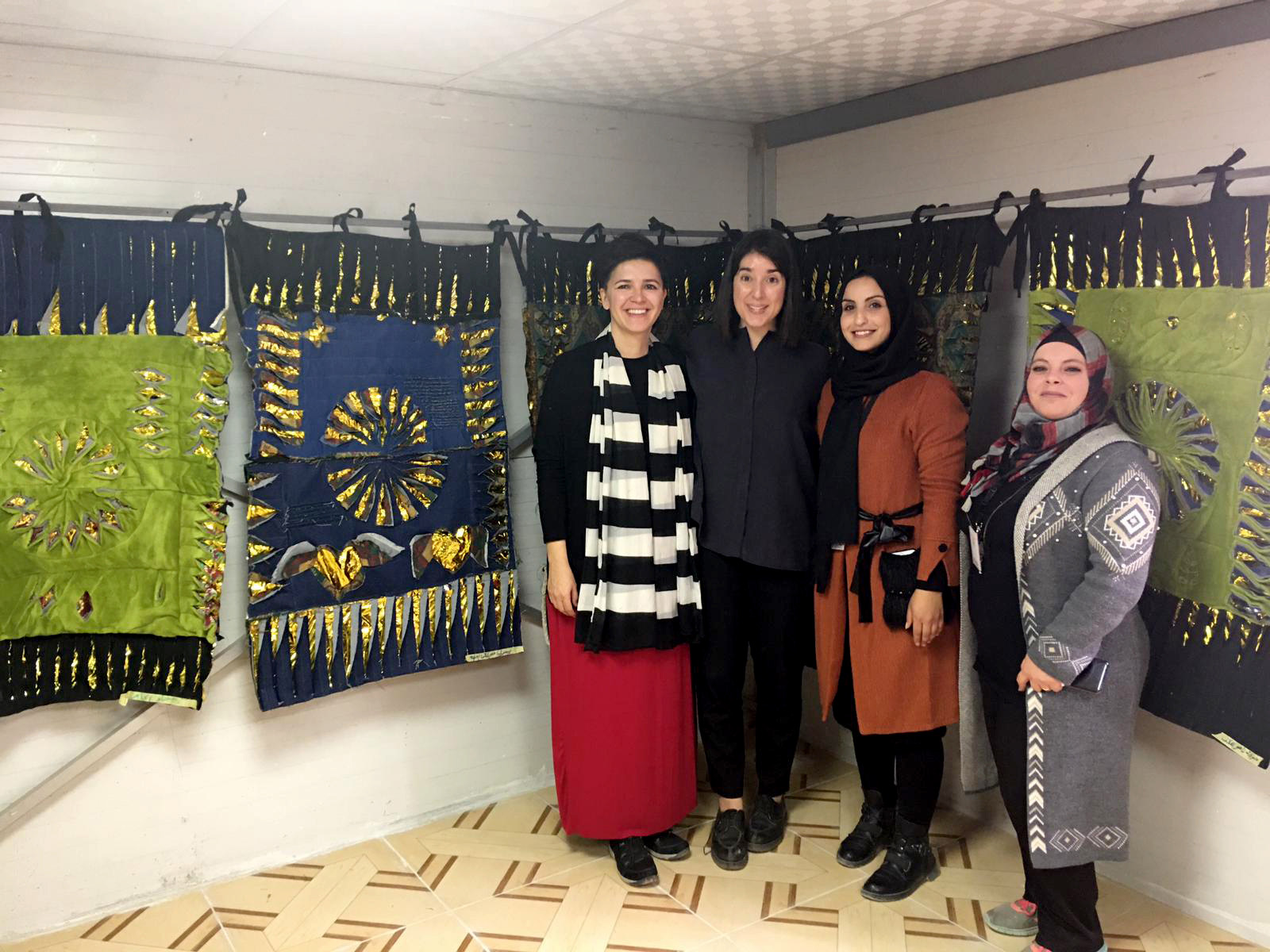
By altering and domesticating the standardized humanitarian T-Shelters, Syrian refugees humanize humanitarian architecture using art and design as a medium of self-determination and world-building.
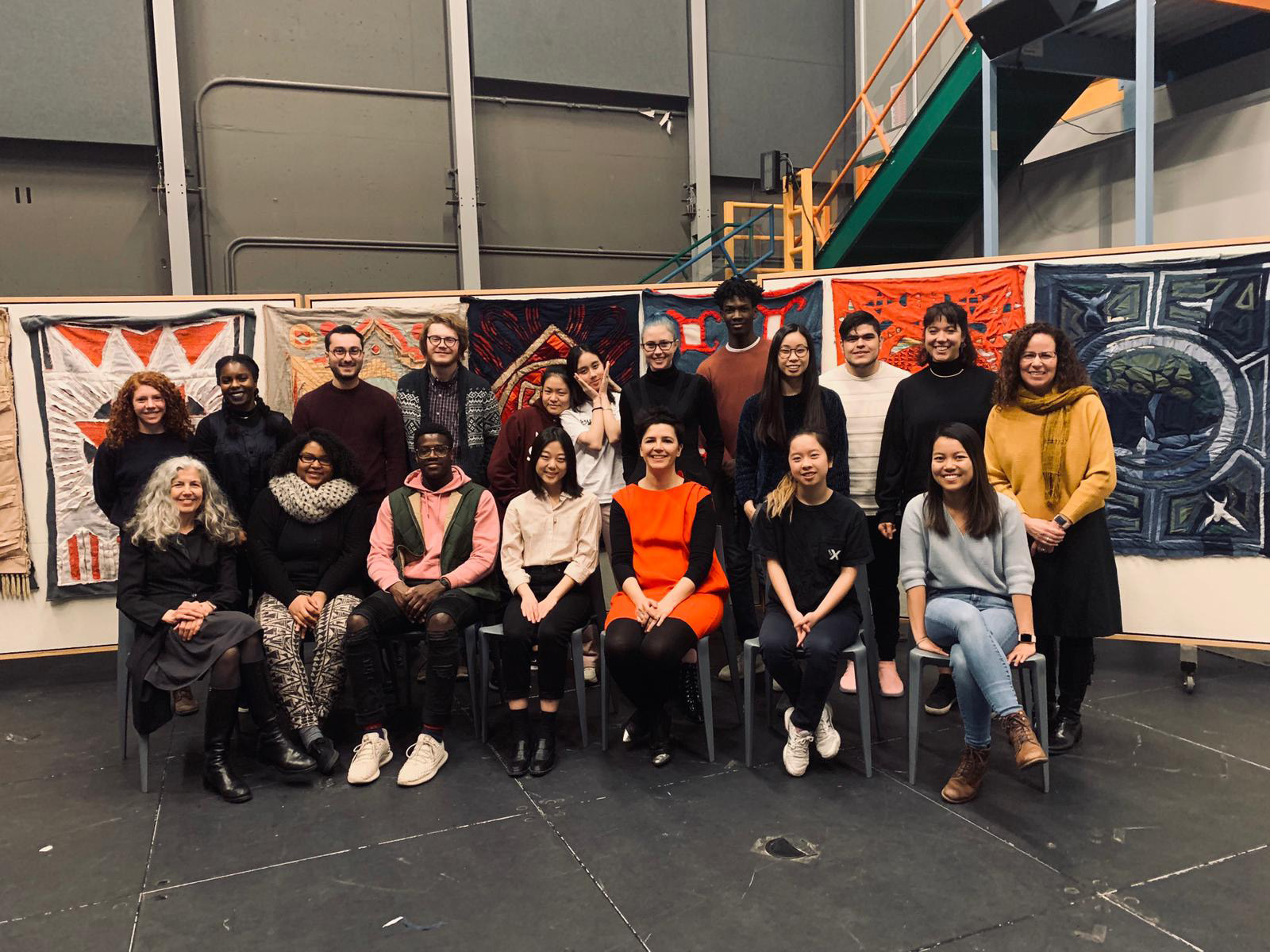
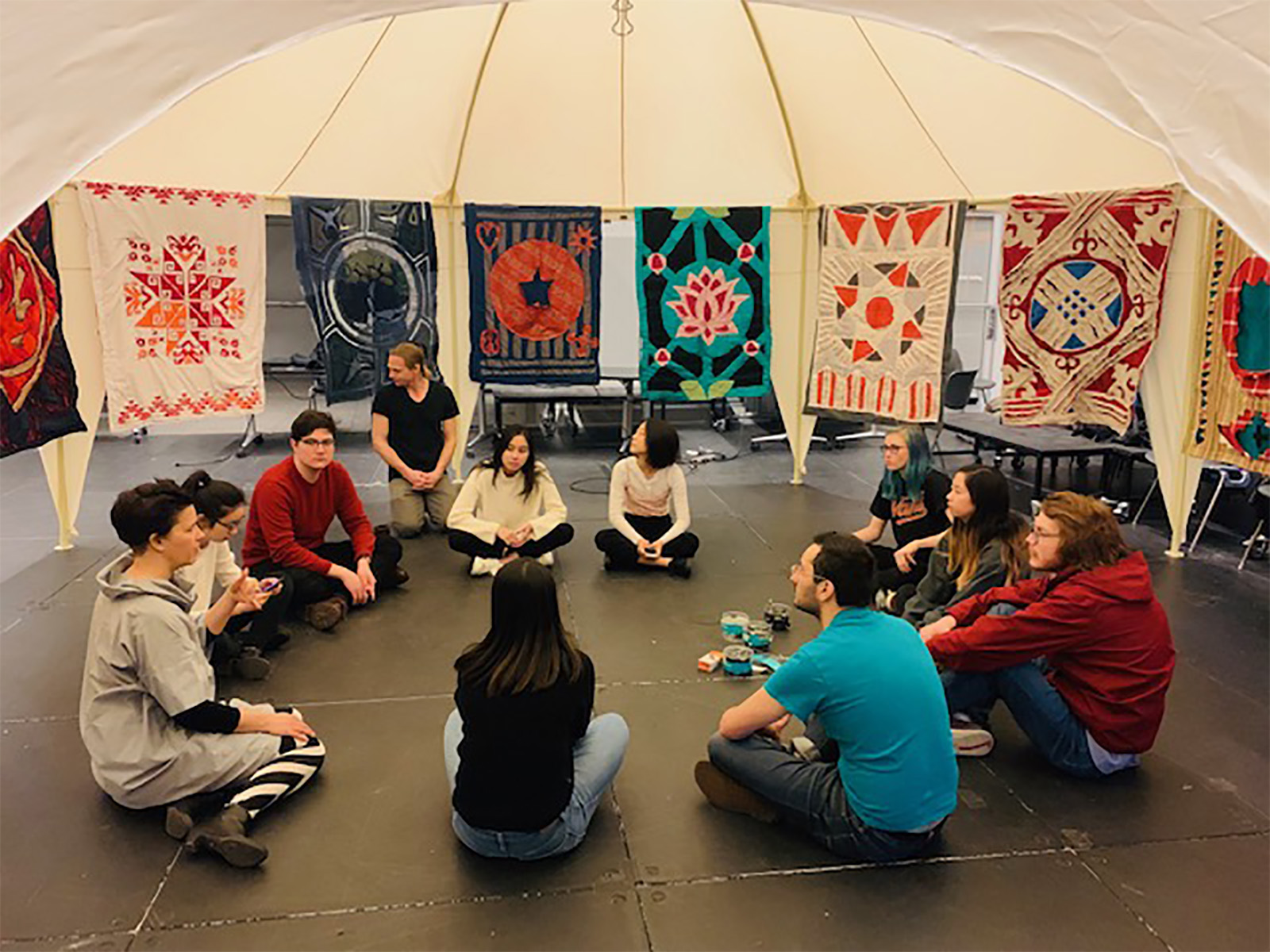
Displaced Empire is a collaborative project across borders developed by artist and architectural historian Azra Akšamija and architect and urbanist Melina Philippou of the Future Heritage Lab at MIT – Massachusetts Institute of Technology in collaboration with Natalie Bellefleur, Stratton Coffman, Jaya A. Eyzaguirre, and Lillian P. H. Kology with the support of Catherine Lie, Calvin Zhong, Zeid Madi, Raafat Majzoub, Mary Mavrohanna, and Dietmar Offenhuber.
Bios
Azra Akšamija, Ph.D. is an artist and architectural historian, director of the MIT Future Heritage Lab (FHL), and Associate Professor at MIT’s Art, Culture, and Technology Program. Her work explores how social life is affected by cultural bias and by the deterioration and destruction of cultural infrastructures within the context of conflict, migration, and displacement.
Melina Philippou, an architect and urbanist, is Program Director of the MIT Future Heritage Lab. Her work explores the agency of spatial practices in the context of forced displacement. She is the design research lead of the work presented in the installation.
Natalie Bellefleur is an architect and designer based in Cambridge, MA. She is a Lead Design Consultant at the MIT Future Heritage Lab and designer at Perkins + Will, Boston. In addition, she is a co-founder of SomeThingsWeMade, which explores the future of craft through the marriage of machine automation and the hand-made.
Stratton Coffman is an artist and architect based in Cambridge, MA. Coffman works with scores, props, performance sets, videos, and texts to examine overlooked spatial histories of the subject. They are half of the research initiative Proof of Concept with Isadora Dannin and a Research Associate at the MIT Future Heritage Lab.
Jaya A. Eyzaguirre is an MIT alumna and former design researcher at MIT’s Future Heritage Lab. Currently based in Chicago, her independent work focuses on endemic approaches to resiliency and how architecture and design is adapted and transformed by its users.
Lillian P. H. Kology is an artist based in Boston, MA. In addition to her studio practice, she is an Assistant Professor of Sculpture at Montserrat College of Art in Beverly, MA, and Lead Artistic Researcher at the MIT Future Heritage Lab.
Catherine Lie is an interdisciplinary artist and designer from Indonesia. Her work critically engages time and temporality to unfold the everyday entanglement of the materials she investigates. She recently received her Master of Architecture from MIT with her thesis “Sourdough Architecture” and has practiced in New York, Indonesia, Chile, Puerto Rico, Jordan, and Berlin.
Zeid Madi is an architect and urban researcher based in Amman, Jordan. His work focuses on patterns and networks of formal and informal settlements via critical cartography, GIS, and spatial data analysis. He directs the Cluster Labs in Amman, Jordan.
Raafat Majzoub positions his work at an intersection between politics, intimacy, and futurecasting — exploring fiction as a tool for individual and collective agency and an arena to construct new worlds. He is the founding director of The Khan: The Arab Association for Prototyping Cultural Practices and Lecturer at the Architecture and Design Department at the American University of Beirut.
Mary Mavrohanna is an architectural designer based in Cyprus with a degree in Interior Architecture. In addition to her first degree, she is currently studying Architecture at the University of Cyprus.
Dietmar Offenhuber, Ph.D., is a media artist and urban planner based in Cambridge, MA. He is an Associate Professor at Northeastern University in the Departments of Art + Design and Public Policy, where he directs the graduate program in Information Design and Visualization. He currently holds visiting appointments at Princeton and Harvard University.
Calvin Zhong is a multidisciplinary designer based in Brooklyn, NY. His current work examines issues of media, representation, and technology in architecture. He is currently pursuing the MArch degree at MIT.
Sponsors
MIT sponsors CAST – International Exhibition and Performance Grant, J-WEL Grant in Education Innovation, LCAU – Leventhal Center for Advanced Urbanism, MISTI Program for the Arab World, MITx, SA+P Office of the Dean, Transmedia Storytelling Initiative, UROP – Undergraduate Research Opportunities Program
Other sponsors The Aga Khan Museum Toronto, Kunsthaus Graz, Margarete Schütte-Lihotzky project grant by the Austrian Federal Chancellery, Sharjah Museum of Islamic Civilization
In-kind and institutional support by CARE Jordan, MIT Program in Art, Culture and Technology Norwegian Refugee Council, Jordan, School of Architecture and Built Environment at the German-Jordanian University
Photography MIT Future Heritage Lab, Dino Rowan
READ ALSO: gjG House in Gentbrugge, Belgium | by Blaf Architects